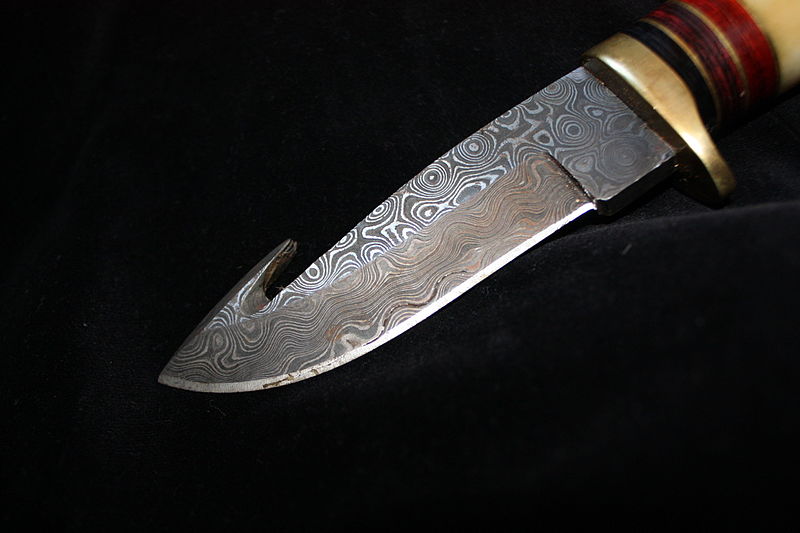How Does Folding Steel Make It Stronger?

Japanese Steel Folding
The Japanese sword making process has always used a technique that folds the steel repeatedly to create stronger, more flexible swords. This forging technique takes several days to complete and usually begins with tamahagane steel — a mixture of smelted iron sand and charcoal. As the metal is folded, the steel is separated by carbon content. The low carbon portion is used for the core of the blade while the high carbon portion is used for the exterior of the blade. How does folding steel like this make it stronger? Learn more from the experts at Swords of Northshire.
Purify the Metal
One crucial element of high quality swords is the purity of the steel. How does folding steel make it stronger? It allows smiths to use lower quality metal and slowly eliminate contaminants and impurities. It also ensures that even very pure metals are clear of problematic contaminants. Impurities in the metal can lead to weak spots and occlusions in the metal where a blade is more likely to break. As a smith folds a blade over and over, different parts of the metal are exposed to oxygen which eventually burns away the impurities throughout the entire blade.
- Layers of Hardenability

The hardness of the layers in a folded sword vary. Most times, the core is softer and more flexible while the exterior of the blade is extra hard and sharp. To avoid breaking a blade, the layers of metal must balance flexibility and strength to create a sword that will bend instead of breaking. Japanese steel folding encourages quenching in oil or water between folding to change the hardness of the steel at different stages.
Homogenization
The most important element of how folding steel makes it stronger is through homogenization. The ability to homogenize metal ensures that carbon is distributed evenly throughout the blade and doesn’t settle in large deposits that can make a sword weak and brittle. No matter if a smith is using Tamahagane steel, 1060 high carbon steel, 1060 high carbon steel, or damascus steel, all the materials must be evenly distributed through folding.
Grain Pattern

While this isn’t necessarily one of the reasons that explains how folding steel makes it stronger, it is one of the reasons Japanese swords are so popular. When a smith folds the steel, it creates a unique pattern in the metal known as the grain. This is an equally aesthetic and functional element that oftentimes helps smiths identify the work of other mastercraftsmen. Many smiths take pride in the patterns they can create and strive to fold their steel to create a signature grain pattern.
Swords at Swords of Northshire
At Swords of Northshire, we combine modern steel with classical Japanese forging techniques to ensure the aesthetics, authenticity, and strength of our blades. Explore our collection of swords today to discover the beauty in this ancient smithing technique.
Best Sellers
- Regular Price
- from $199.99
- Sale Price
- from $199.99
- Regular Price
-
- Unit Price
- per
- Regular Price
- from $299.00
- Sale Price
- from $299.00
- Regular Price
-
- Unit Price
- per
- Regular Price
- from $199.00
- Sale Price
- from $199.00
- Regular Price
-
$0.00
- Unit Price
- per
- Regular Price
- from $619.00
- Sale Price
- from $619.00
- Regular Price
-
- Unit Price
- per
- Regular Price
- from $319.00
- Sale Price
- from $319.00
- Regular Price
-
- Unit Price
- per
- Regular Price
- from $249.00
- Sale Price
- from $249.00
- Regular Price
-
- Unit Price
- per
- Regular Price
- from $339.00
- Sale Price
- from $339.00
- Regular Price
-
- Unit Price
- per
- Regular Price
- from $219.00
- Sale Price
- from $219.00
- Regular Price
-
- Unit Price
- per
- Regular Price
- from $364.00
- Sale Price
- from $364.00
- Regular Price
-
- Unit Price
- per
- Regular Price
- from $519.00
- Sale Price
- from $519.00
- Regular Price
-
- Unit Price
- per









